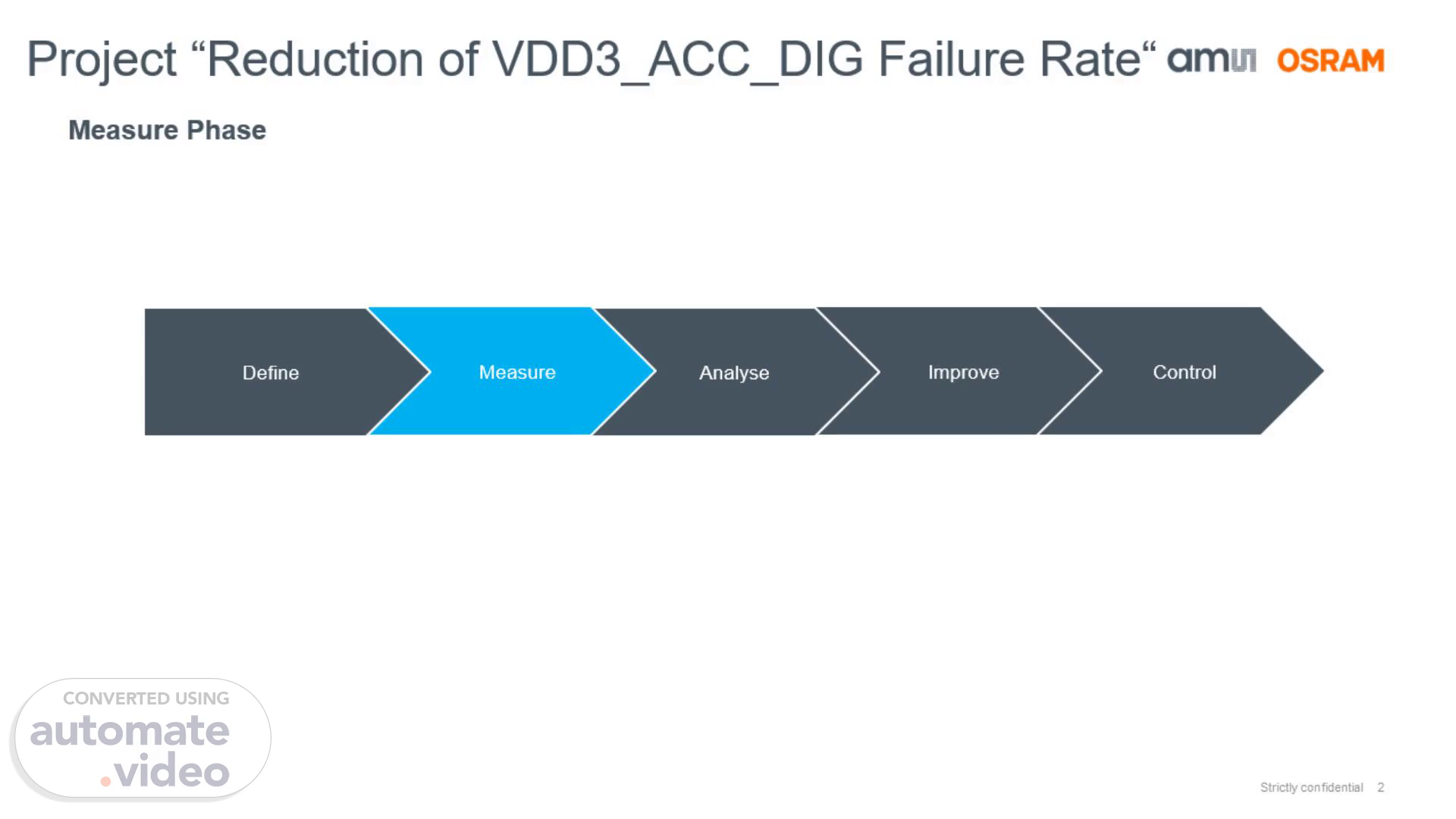
Project "Reduction of VDD3_ACC_DIG Failure Rate"
Scene 1 (0s)
[Audio] the measure phase involves establishing a baseline for the existing process, collecting data, validating the measurement equipment, and determining process capacity..
Scene 2 (10s)
[Audio] Graph show normal distribution for the parameter VDD3_DIG failure rate. With P value > 0.05 we can say that the data comes from a normal distribution.
Scene 3 (24s)
[Audio] This sample data from lot H90811.1 During first pass test, There's a clear indication that we have a setup related issue on site 2. During Retest, Now the data shows that VDD_ACC_DIG failures occur in all sites. It shows that the failing units are not recoverable upon retest.
Scene 4 (50s)
[Audio] The measurements on parameter VDD3_ACC_DIG are identical throughout the First Pass Test and the Production auto retest, indicating that the units are not recoverable on retest..
Scene 5 (1m 15s)
[Audio] The Six Sigma Analyze Phase is the third step in the DMAIC process, which is used to solve problems and generate plans. In this phase, we will review the data collected during the Measure Phase and make sense of it by formulating hypotheses about what is causing the problem or opportunity..
Scene 6 (1m 34s)
[Audio] After brainstorming with the team, we uncover various potential root causes and hypotheses that have an impact on the failure rate..
Scene 7 (1m 49s)
[Audio] We Identify potential root causes to be X1: The defective tester resource and X2: Different LoadBoard revisions. We will evaluate both of these potential root causes using histograms and a two-sample t-test..
Scene 8 (2m 5s)
[Audio] Data shows that mean of the BAD OVI board is significantly different to GOOD OVI board with p =0.039. Next step is to determine what causes the OVI board to wear out..
Scene 9 (2m 23s)
[Audio] Data shows that mean of the BAD OVI board is significantly different to GOOD OVI board with p =0.039. Next step is to determine what causes the OVI board to wear out..
Scene 10 (2m 44s)
[Audio] Box plot demonstrates that the measurement for the parameter VDD3_DIG became substantially more stable after changing the OVI board. On this summary shows wide reading on site 2 and 4 After swapping of OVI resource the site with wide variation of measurements was also interchange from site 2 and 4 to site 1 and 3 Data shows that after changing suspected OVI resource. Data is now stable..
Scene 11 (3m 14s)
[Audio] Testing X.2 or Different Load Board revisions Data shows that the Load Board rev B and rev C is not significantly different Load Board revision is not significant..
Scene 12 (3m 30s)
[Audio] Data shows that the Load Board rev B and rev C is not significantly different using histogram.
Scene 13 (3m 42s)
[Audio] For X.1, the conclusion is that tester resources that wear out have substantial variation in terms of measurements when compared to GOOD tester resources. For X.2, tester resources that wear out have large variation in terms of measurements when compared to GOOD tester resources. Red X: OVI resource is causing fluctuations of measurements for VDD_ACC_DIG test parameter. Latter showed failure in patterns; swapping the slots of OVI boards causes failures to interchange and always comes in pairs, for example, at sites 1 and 3, or at sites 2 and 4, which those sites share OVI resources. The challenge now is to find the main culprit causing the OVI resource to show instability of measurements..